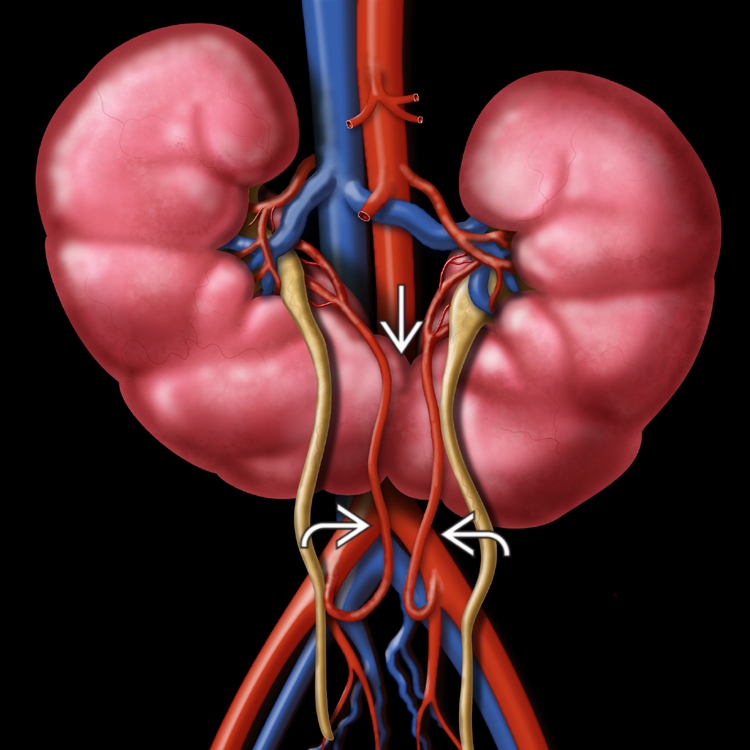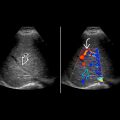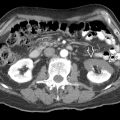KEY FACTS
Terminology
- •
Congenital anomaly in which kidneys are fused at their lower poles in midline
Imaging
- •
Kidneys on opposite sides with lower poles fused in midline
- ○
Note that in crossed-fused ectopia, both kidneys are located on one side
- ○
- •
Presence of isthmus is defining feature; isthmus may be fibrous or functioning renal tissue
- ○
Isthmus crosses midline anterior to spine and aorta but posterior to inferior mesenteric artery
- ○
- •
Cross-sectional imaging (CT or MR) to define vascular anatomy and can be used to visualize associated complications such as malignancy
- •
May be first detected by ultrasound but vascular anatomy better defined by CTA or MRA
- •
Arterial supply and venous drainage may be complex
Top Differential Diagnoses
- •
Crossed-fused ectopia
- •
Renal ectopia
- •
Paraaortic lymphadenopathy/retroperitoneal mass
Pathology
- •
Fusion of kidney precursors in early gestation when still located in pelvis, preventing appropriate ascent
Clinical Issues
- •
1 in 500 children; M:F = 2:1
- •
30% asymptomatic
- •
Up to 2/3 have associated abnormalities (most commonly genitourinary)
- •
Complications include uretero-pelvic junction obstruction, infection, nephrolithiasis
- •
Increased risk of malignancy such as Wilms tumor, urothelial carcinoma, and carcinoid
- •
Prognosis is good in absence of associated abnormalities
Scanning Tips
- •
Suspect when lower renal poles disappear medially
- •
Look for isthmus in midline anterior to aorta and posterior to inferior mesenteric artery
- •
Use compression to displace bowel
 anterior to the aorta and inferior vena cava. Note the additional renal arteries arising from the common iliac arteries
anterior to the aorta and inferior vena cava. Note the additional renal arteries arising from the common iliac arteries  .
.
 of the horseshoe kidney lies anterior to the spine
of the horseshoe kidney lies anterior to the spine  and vena cava
and vena cava  . The isthmus is composed of functioning renal tissue.
. The isthmus is composed of functioning renal tissue.
 of the horseshoe kidney lies anterior to the aorta
of the horseshoe kidney lies anterior to the aorta  and inferior vena cava
and inferior vena cava  . The isthmus is composed of functioning renal tissue.
. The isthmus is composed of functioning renal tissue.
Stay updated, free articles. Join our Telegram channel

Full access? Get Clinical Tree








